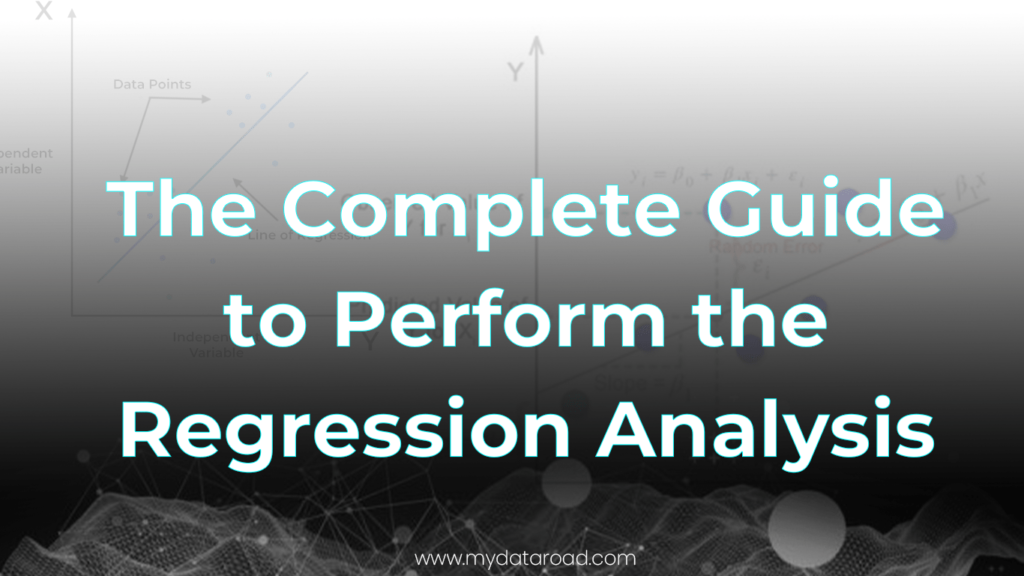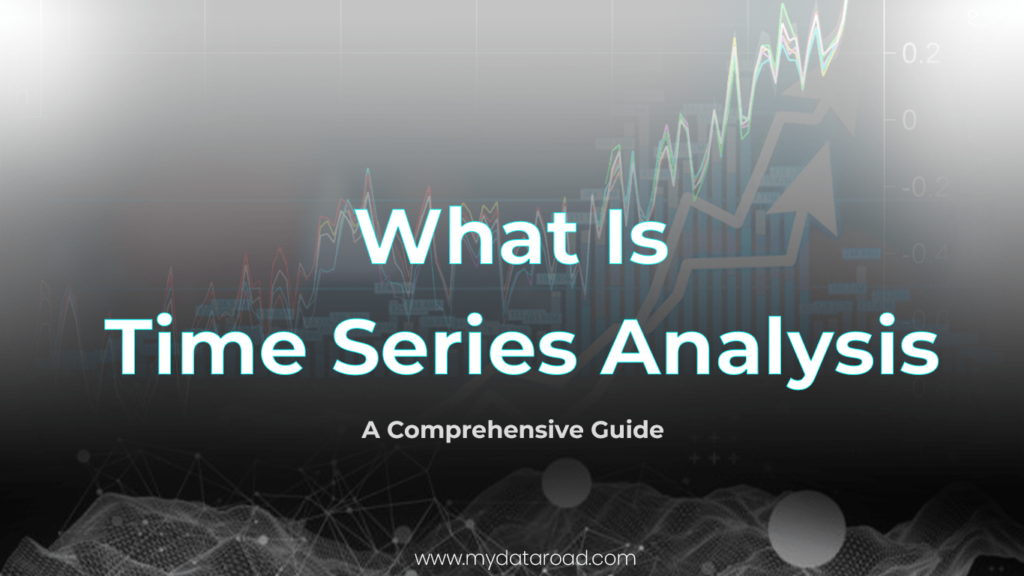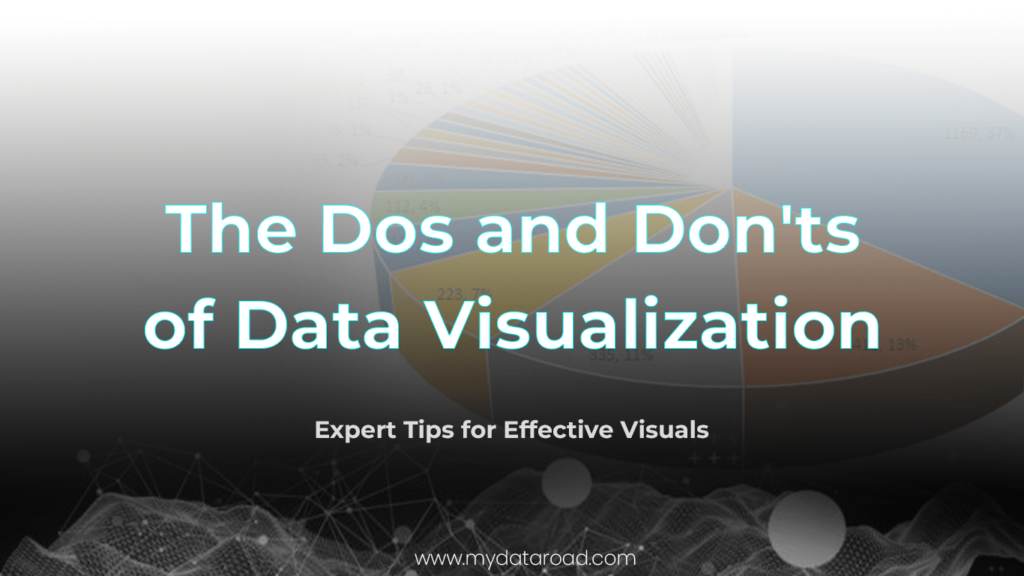The Complete Guide to Perform the Regression Analysis
Regression analysis is a powerful statistical method used to explore the relationships between variables and make predictions based on those relationships. It helps businesses, researchers, and analysts to understand how certain factors influence the dependent variable’s behavior, enabling them to make well-informed decisions. In this article, we will delve into the complete guide on how to perform regression analysis, starting from simple linear regression all the way to multiple regression techniques.
Simple linear regression is the foundation of regression analysis, which assumes a linear relationship between the dependent variable and a single independent variable. This straightforward method allows for a quick understanding of the data, laying the groundwork for more complex models. As the number of independent variables increases, the analysis moves towards multiple linear regression, which provides insights into more intricate relationships.
While linear models dominate the regression analysis landscape, nonlinear models, such as logistic regression, are also essential in specific contexts. These curved-line models offer more flexibility, capturing unique relationships that a straight line cannot represent. As we continue through this guide, you will learn the key concepts, assumptions, and steps to effectively perform regression analysis, allowing you to explore complex data sets and make impactful decisions for your organization.
Understanding Regression Analysis
Concepts and Terminology
Regression Analysis
Regression analysis is a statistical technique used to estimate the relationships between a dependent variable and one or more independent variables. This method allows you to assess the strength of the relationship between variables, helping you model the future relationship between them.
Linear Regression
Linear regression is a type of regression analysis where a straight line is fitted to the observed data. This line represents the relationship between one dependent variable and one or more independent variables. Linear regression can be classified into two main types: simple linear regression and multiple linear regression.
- Simple linear regression: Involves only one independent variable.
- Multiple linear regression: Involves more than one independent variable.
Variables
- Dependent variable: This is the variable being predicted or estimated. It depends on the independent variables.
- Independent variables: These are the variables that affect the dependent variable. They are also known as predictors, explanatory variables, or input variables.
Formula
The formula for a simple linear regression model is:
y = b0 + b1x + ε
Where:
yis the dependent variable.b0is the intercept.b1is the slope.xis the independent variable.εis the error term.
The intercept (b0) represents the value of the dependent variable when the independent variable is 0. The slope (b1) represents the change in the dependent variable for every unit change in the independent variable.
Coefficient of Determination (R²)
R is the correlation coefficient, which measures the strength and direction of the linear relationship between two variables. R² is the coefficient of determination, which indicates the proportion of variance in the dependent variable that can be explained by the independent variables.
Significance Testing
Hypothesis tests are often performed to determine the statistical significance of the regression coefficients. The null hypothesis states that the coefficient is equal to zero (no effect), whereas the alternative hypothesis claims that the coefficient is not equal to zero (significant effect).
That’s a brief overview of regression analysis, linear regression, and key concepts and terminology.
Types of Regression Analysis
In this section, we will discuss different types of regression analysis commonly used in various industries and research fields. We will focus on linear regression models, including simple and multiple linear regression.
Linear Regression Models
Linear regression models are one of the most widely used methods in regression analysis. They are based on a linear relationship between the dependent variable and one or more independent variables. These models provide an easy-to-understand description of the relationships between variables and are often used for predicting and forecasting. Linear regression models can be divided into two subcategories: simple linear regression and multiple linear regression.
Simple Linear Regression
Simple linear regression is the most basic form of linear regression analysis. It involves a single independent variable, which is used to predict the dependent variable. This type of regression aims to find the best-fitting straight line that describes the relationship between the two variables. In simple terms, simple linear regression can be represented by the equation:
y = a + bx
Where y is the dependent variable, x is the independent variable, a is the y-intercept, and b is the slope of the line. The goal is to determine the values of a and b that best fit the data.
An example of simple linear regression could be predicting a person’s weight based on their height, with height being the independent variable (x), and weight being the dependent variable (y).
Multiple Linear Regression
Multiple linear regression extends the concept of simple linear regression to include multiple independent variables. This type of regression allows us to analyze more complex relationships between variables and provides a better understanding of how various factors influence the dependent variable. The mathematical representation of multiple linear regression is:
y = a + b1x1 + b2x2 + ... + bnxn
Where y is the dependent variable, x1, x2, ..., xn are the independent variables, a is the y-intercept, and b1, b2, ..., bn are the coefficients associated with each independent variable.
A real-world example of multiple linear regression could be predicting house prices based on several features such as the number of rooms, square footage, and the age of the house. In this case, each feature is an independent variable, and the house price is the dependent variable.
In summary, regression analysis provides powerful tools for understanding relationships between variables and making predictions. Among the various types of regression, linear models, including simple and multiple linear regression, are some of the most widely used and accessible methods due to their simplicity and ease of interpretation.
How to Build a Model for Regression Analysis
Preparing Your Data
Before building a regression model, it is crucial to prepare and clean the data. Here are some essential steps to take:
- Collect the raw data: Obtain relevant datasets that include both dependent and independent variables.
- Organize the data: Arrange the data in a tabular format, with each row representing an observation and each column representing a variable.
- Split the dataset: Divide the dataset into training and testing sets to evaluate the model’s performance later.
Exploring the Dataset
Once the data is prepared, it’s time to explore and understand it. This step involves:
- Descriptive statistics: Calculate summary measures such as the mean, median, and standard deviation for each variable to get an overview of the dataset.
- Correlations: Examine the correlations between the variables to identify possible relationships that can help build the model.
- Visualizations: Create plots and graphs to visually explore the data and gain insight into possible trends, patterns, and outliers.
Handling Missing Values
Missing values can impact the performance of the regression model. Some strategies for handling missing values include:
- Impute missing values: Replace missing values with estimated values, such as the mean or median of the variable. This method can help maintain the overall structure of the dataset.
- Drop missing values: Remove rows or columns with missing values. This method can be effective when the amount of missing data is relatively small.
- Use advanced techniques: Consider employing more sophisticated methods, such as k-nearest neighbors or multiple imputation, to estimate missing values more accurately.
After handling the missing values and exploring the dataset, it’s time to build and fit the regression model. It is crucial to measure the model’s performance, test its assumptions, and, if necessary, revise the model to ensure accurate and informative results.
Executing Regression Analysis
Using Python
Performing regression analysis in Python is useful when tackling complex data and making data-driven decisions. To carry out a regression analysis in Python, one can use packages like pandas, matplotlib, numpy, and sklearn. The following steps outline the process:
- Import the necessary libraries
- Load and preprocess the dataset
- Split the dataset into training and testing sets
- Train the regression model on the training set
- Evaluate the model using performance metrics
For a more in-depth analysis, check out this complete guide to regression analysis using Python.
Using R Programming Language
R offers powerful statistical capabilities to conduct regression analyses. The essential packages for linear regression analysis in R include ggplot2 and lm. Follow these steps to perform a regression analysis in R:
- Load required libraries and the dataset
- Conduct exploratory data analysis (EDA)
- Fit a linear regression model using the
lm()function - Review the regression model summary
- Visualize the results using the
ggplot2package
For a thorough walk-through, refer to this step-by-step guide on linear regression in R.
Using Excel
Excel provides a user-friendly interface to conduct simple regression analyses. The built-in Analysis ToolPak is equipped to perform regression analysis without requiring any programming skills. To perform a regression analysis in Excel:
- Organize the dataset in columns, with independent variables adjacent to each other
- Activate the Analysis ToolPak add-in
- Use the ‘Data Analysis’ feature to open the regression analysis tool
- Select input variable ranges and output options
- Analyze the regression analysis results generated by Excel
For more details on using Excel for regression analysis, visit this guide on how to perform regression analysis using Excel.
Interpreting Regression Results
Regression Coefficients
Regression coefficients represent the strength and direction of the relationships between the predictor variables and the response variable in a regression analysis. These coefficients describe the estimated change in the response variable for a one-unit increase in each predictor variable, holding all other variables constant. The line of best fit is derived from these coefficients, with the y-intercept representing the estimated value of the response variable when all predictor variables are zero, and the slope coefficients indicating how the response variable changes as the predictor variables increase or decrease.
It is important to consider the standard error of each regression coefficient when interpreting results. The standard error measures the precision of the estimate and is used to calculate confidence intervals and test for statistical significance.
Model Fit and Accuracy
Evaluating the model’s fit and accuracy involves examining several key metrics:
- R-squared: This value represents the proportion of the variance in the response variable that is explained by the predictor variables. R-squared values range from 0 to 1, with higher values indicating a better fit. However, keep in mind that a very high R-squared may indicate overfitting, especially in multiple regression analysis.
- Adjusted R-squared: This metric adjusts the R-squared value for the number of predictor variables in the model. In multiple regression, it is preferred over the simple R-squared because it can penalize models with too many predictor variables, preventing overfitting.
- F-statistic: This value tests the overall statistical significance of the model, indicating whether the model is better than a random model in predicting the response variable. A significant F-statistic (usually with a p-value less than 0.05) suggests that the predictor variables are jointly useful for forecasting the response variable.
- Residuals: The error term represents the difference between the observed and predicted values. It is important to examine the residuals for patterns, as the presence of non-random patterns may suggest issues with the model, such as violations of homoscedasticity or the need for nonlinear regression.
When assessing the model fit and accuracy, it is essential to be cautious in interpreting the results and avoid making exaggerated or false claims. Remember that correlation does not imply causation and statistical significance does not always indicate practical significance.
In summary, interpreting regression results requires a thorough understanding of regression coefficients, as well as indicators of model fit and accuracy. By examining these components, one can gain insights into the relationships between predictor variables and the response variable, assess the quality of the model, and make more informed decisions based on the results.
Assumptions and Validity
Residual Analysis
Residual analysis is crucial for validating the assumptions of linear regression. Residuals refer to the difference between observed values and predicted values of the dependent variable. The analysis involves evaluating the residuals for patterns that might indicate a violation of the assumptions, such as non-constant variance, non-linear relationships, or non-independence of errors 1. Some key aspects to consider when performing a residual analysis are:
- Linearity: The true relationship between the independent and dependent variables should be linear. A scatter plot of residuals and fitted values can help to identify non-linear patterns.
- Independence: The errors (residuals) should not display any form of dependence or pattern. This can be checked by examining a plot of the residuals against the order of observations or time.
- Homoscedasticity: The variance of residuals should be constant for different levels of the independent variable(s). A scatter plot of the residuals and fitted values can help to spot any signs of heteroscedasticity.
Checking for Multicollinearity
Multicollinearity is a situation where multiple independent variables are highly correlated, leading to instability in a regression model’s coefficient estimates and reduced accuracy. It is essential to detect multicollinearity before interpreting the model’s results or making any predictions. Some techniques for identifying and addressing multicollinearity are:
- Variance Inflation Factor (VIF): VIF measures the inflation in the variance of the regression coefficients due to multicollinearity. A VIF greater than 10 indicates a high degree of multicollinearity between the independent variables
- Correlation Matrix: A correlation matrix can help identify which pairs of independent variables have strong correlations. It can be constructed using any statistical software or programming language, such as R
- Removing Variables: If VIF or correlation analysis indicates multicollinearity, consider removing one of the correlated variables or combining them into a single variable (e.g., by taking an average)
In summary, a thorough residual analysis and checking for multicollinearity are vital for establishing the assumptions and validity of a linear regression model. These steps ensure that the model’s results accurately capture the relationships between the observed variables and that any predictions made are grounded in a well-supported model.
Advanced Regression Techniques
Regularization Techniques
Regularization techniques are essential in machine learning and data science for improving model performance and preventing overfitting. Two popular regularization methods used in advanced regression models are Lasso and Ridge.
Lasso (Least Absolute Shrinkage and Selection Operator) is a technique used to shrink the coefficient estimates towards zero. It achieves this by penalizing the sum of the absolute values of the coefficients, thus selecting a subset of features that contribute the most to the prediction. This results in a simpler, more interpretable model. The Lasso method can effectively deal with high-dimensional data and multicollinearity.
Ridge Regression is another regularization method that shrinks the coefficient estimates towards zero like Lasso, but it penalizes the sum of the squared values of the coefficients. This approach leads to a more balanced model, preventing overfitting and improving generalization on new data. Ridge is most suitable when dealing with continuous variables and linear correlations between features.
Nonlinear Regression Models
Nonlinear regression models are useful in statistical analyses where the relationship between the dependent variable and the independent variables is not linear. These models can capture complex patterns and interactions, allowing for a more accurate representation of the data.
One of the most common nonlinear regression models is the Polynomial Regression model. In this method, the independent variables are raised to higher powers (e.g., quadratic or cubic), forming a polynomial equation. This allows the model to fit nonlinear patterns in the data while still using linear regression techniques.
Another type of nonlinear regression model is the Generalized Additive Model (GAM). GAMs are flexible and can account for nonlinear relationships between the independent and dependent variables. They build on the concept of non-parametric smoothers, such as splines and wavelets, to model complex functional relationships.
Other examples of nonlinear regression models include the exponential growth model and the logistic growth model, which can better represent specific types of data patterns.
In summary, advanced regression techniques allow data scientists to create more accurate and robust models. Regularization techniques, such as Lasso and Ridge, improve model performance by shrinking coefficient estimates and preventing overfitting. Nonlinear regression models, such as Polynomial Regression and Generalized Additive Models, account for non-linear relationships between variables, capturing complex patterns and interactions in the data.
Remember to always validate the assumptions of the chosen model, assess the fit, and interpret the results based on the beta and t statistics for a comprehensive understanding of the regression analysis.
How Businesses Can Use Regression Analysis
Regression analysis is a powerful statistical method used to explore the relationship between one dependent variable and one or more explanatory variables. This analytical technique is widely employed in various industries to make data-driven business decisions.
Sales Forecasting
One of the most common applications of regression analysis in business is sales forecasting. By examining historical data, businesses can create a model to predict future sales based on specific variables such as economic indicators, customer demographics, and advertising spend. For example, a company might perform a regression analysis to determine how changes in GDP could affect sales.
Regression analysis can also help businesses estimate the impact of promotional strategies, regional differences, or other factors on sales. Key components of this analysis include confidence intervals, which indicate the level of uncertainty surrounding the predictions. By using this statistical method, businesses can make more accurate and informed decisions when allocating resources or planning for the future.
Temperature Prediction
Regression analysis can also be used to predict variables such as temperature in manufacturing or other industrial processes. For instance, a model might be used to determine whether pressure and fuel flow are related to the temperature of a manufacturing process. This information can be crucial in optimizing production efficiency, maintaining quality standards, and minimizing the risk of equipment damage.
By examining the relationships between environmental conditions, operational variables, and process outcomes, businesses can fine-tune their processes to achieve desired results. Furthermore, understanding the connections between these variables contributes to better decision-making in both operational and strategic contexts.
To perform regression analysis, businesses can use a variety of tools, including Excel and specialized statistical software programs. By leveraging these resources and integrating regression analysis into their decision-making processes, companies can gain valuable insights that may improve efficiency, profitability, and overall performance.
Regression Analysis Tools
There are several tools available for performing regression analysis. These tools vary in complexity and features, allowing users to choose the one that best suits their needs. In this section, we will briefly discuss some of the most popular regression analysis tools.
Excel
Excel is a widely used spreadsheet application that offers basic statistical functions, including regression analysis. Excel’s Data Analysis Toolpak provides an easy way to conduct regression using its built-in functions. Excel is appropriate for those who are just starting out with regression analysis or those who prefer a familiar, user-friendly interface.
R
R is a powerful, open-source programming language designed for statistical computing and graphics. It allows users to perform complex statistical analyses, including regression, using various packages like lm and glm. R is best suited for researchers and statisticians who require advanced statistical capabilities and flexibility. Linear regression in R is well-documented and provides step-by-step guides for users.
Python
Python is another popular, open-source programming language widely used in data science and machine learning. Libraries like NumPy, pandas, and scikit-learn offer extensive support for regression analysis. Skilled programmers and data scientists often prefer Python due to its versatility, extensive library support, and ease of integration with other tools.
SPSS
SPSS is a powerful, user-friendly statistical software package widely used in academic research and business settings. It offers both simple and advanced statistical functions, including linear and multiple regression analyses. SPSS is a good choice for researchers who require a robust, easy-to-use statistical software package with extensive functionality.
To conclude, the choice of a regression analysis tool depends on the user’s needs, experience, and familiarity with the tool. Some prefer Excel for its simplicity, while others opt for R, Python, or SPSS for their advanced capabilities. It’s essential to evaluate the requirements of the task at hand and choose a tool that aligns with those needs.
Related Article: Tools for Data Analysis
Performing Regression Analysis FAQ:
1. What is the difference between simple linear regression and multiple linear regression?
Simple linear regression involves only one independent variable, whereas multiple linear regression involves two or more independent variables.
2. What are the assumptions of regression analysis?
The assumptions of regression analysis are: linearity, independence, homoscedasticity, normality, and absence of multicollinearity.
3. How can I improve the accuracy of my regression model?
You can improve the accuracy of your regression model by using more data, selecting the appropriate variables, dealing with outliers, and using cross-validation techniques.
4. What is overfitting in regression analysis?
Overfitting occurs when a model is too complex and fits the training data too closely, resulting in poor performance on new data.
5. How do businesses use regression analysis?
Businesses use regression analysis to identify relationships between variables and make predictions about future outcomes, such as sales or customer behavior. This can inform decision-making and help optimize business processes.
Regression analysis is a powerful technique used to explore the relationship between variables and make predictions. In this guide, we covered the different types of regression analysis, the steps to build a regression model, and how to evaluate its performance. We also discussed how businesses can benefit from using regression analysis and the tools available for conducting it. By mastering regression analysis, you can unlock valuable insights from your data and make data-driven decisions. If you want to become a skilled data analyst or data scientist, check out our Complete Data Science Road Map for a comprehensive guide on developing the skills needed for this exciting career.
What you should know:
- Our Mission is to Help you to Become a Professional Data Analyst.
- This Website is a Home for Data Analysts. Get our latest in-depth Data Analysis and Artificial Intelligence Lessons and Updates in your Inbox.

Tech Writer | Data Analyst | Digital Creator



